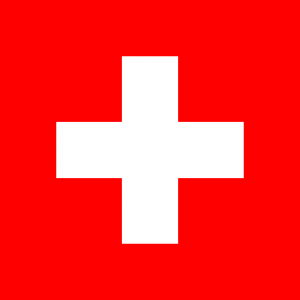Language/Swiss-german/Vocabulary/Colors
Hi Swiss German learners! 😊
In this lesson, we will talk about colors in Swiss German. Colors are very important in our daily lives, and knowing the right vocabulary can help us to express ourselves better in Swiss German.
Consider exploring these related pages after completing this lesson: Days of the Week, Drinks, Geography & Express Surprise.
Basic colors[edit | edit source]
Let's start with the basic colors that we see around us every day.
| Swiss German | Pronunciation | English |
|---|---|---|
| Rot | [rot] | Red |
| Grün | [grün] | Green |
| Blau | [blau] | Blue |
| Gelb | [gelb] | Yellow |
| Schwarz | [ʃwarz] | Black |
| Weiss | [vais] | White |
| Grau | [grau] | Gray |
| Orange | [oranʒ] | Orange |
| Lila | [liːla] | Purple |
Remember: In Swiss German, the adjective always follows the noun. Therefore, when we want to describe an object in a certain color, we have to put the color after the noun. For example, "ein rotes Auto" means "a red car" in English.
Dark and light colors[edit | edit source]
Swiss German has a unique way of adding the meanings "dark" and "light" to the basic colors. Here are some examples:
| Swiss German | Pronunciation | English |
|---|---|---|
| Dunkelrot | ['dʊŋklrɔt] | Dark red |
| Hellgrün | [hɛlgryn] | Light green |
| Dunkelblau | ['dʊŋklblau] | Dark blue |
| Hellgelb | [hɛlgɛlp] | Light yellow |
| Dunkelschwarz | ['dʊŋkəlʃvarz] | Dark black |
| Hellweiss | [hɛlvaɪs] | Light white |
| Dunkelgrau | ['dʊŋklgrau] | Dark gray |
| Hellorange | [hɛloranʒ] | Light orange |
- Interesting facts
In Switzerland, when a traffic light turns yellow, it means "slow down" instead of "get ready to stop" as it does in many countries. This difference reflects the Swiss attitude towards safety, and it often baffles foreign visitors. In Swiss German, we call this color "Gelb", which is the same as the English word "yellow".
Additional colors[edit | edit source]
Besides the basic and dark/light colors, there are many other colors that we can learn. Here are some examples:
| Swiss German | Pronunciation | English |
|---|---|---|
| Rosa | [roza] | Pink |
| Türkis | [tyrkɪs] | Turquoise |
| Gold | [gold] | Gold |
| Silber | [zilbər] | Silver |
| Braun | [braʊn] | Brown |
| Beige | [beɪʒ] | Beige |
- Cultural information
Swiss chocolate is famous all over the world, and it comes in many different colors and flavors. Some of the most popular Swiss chocolate brands include Lindt, Toblerone, and Nestlé. In Swiss German, we call chocolate "Schoggi".
Dialogue[edit | edit source]
Lisa and Maria are discussing colors.
- Lisa: "Ich liebe rot. Meine Lieblingsfarbe ist rot." (I love red. My favorite color is red.)
- Maria: "Ich mag grün. Hellgrün gefällt mir am besten." (I like green. I prefer light green.)
- Lisa: "Was ist deine zweitliebste Farbe?" (What is your second favorite color?)
- Maria: "Das ist schwierig. Wahrscheinlich blau oder lila." (That's difficult. Probably blue or purple.)
Conclusion[edit | edit source]
Colors are an essential part of our lives, and knowing the right vocabulary in Swiss German can help us to communicate better. Don't be afraid to practice and make mistakes. To improve your Swiss German vocabulary, use the Polyglot Club website. Find native speakers and ask them any questions!
➡ If you have any questions, please ask them in the comments section below.
➡ Feel free to edit this wiki page if you think it can be improved. 😎
Finished this lesson? Check out these related lessons: Animals, Count to 10, Education & Clothes.
Other Lessons[edit | edit source]
- Count to 10
- Tongue twisters
- Animals
- Drinks
- Days of the Week
- How to say Good Bye
- Fruits
- Express Surprise
- Health
Sources[edit | edit source]
- Colors in Swiss-German phrasebook
- Swiss-German phrasebook – Travel guide at Wikivoyage
- Swiss-German phrasebook - Wikitravel

